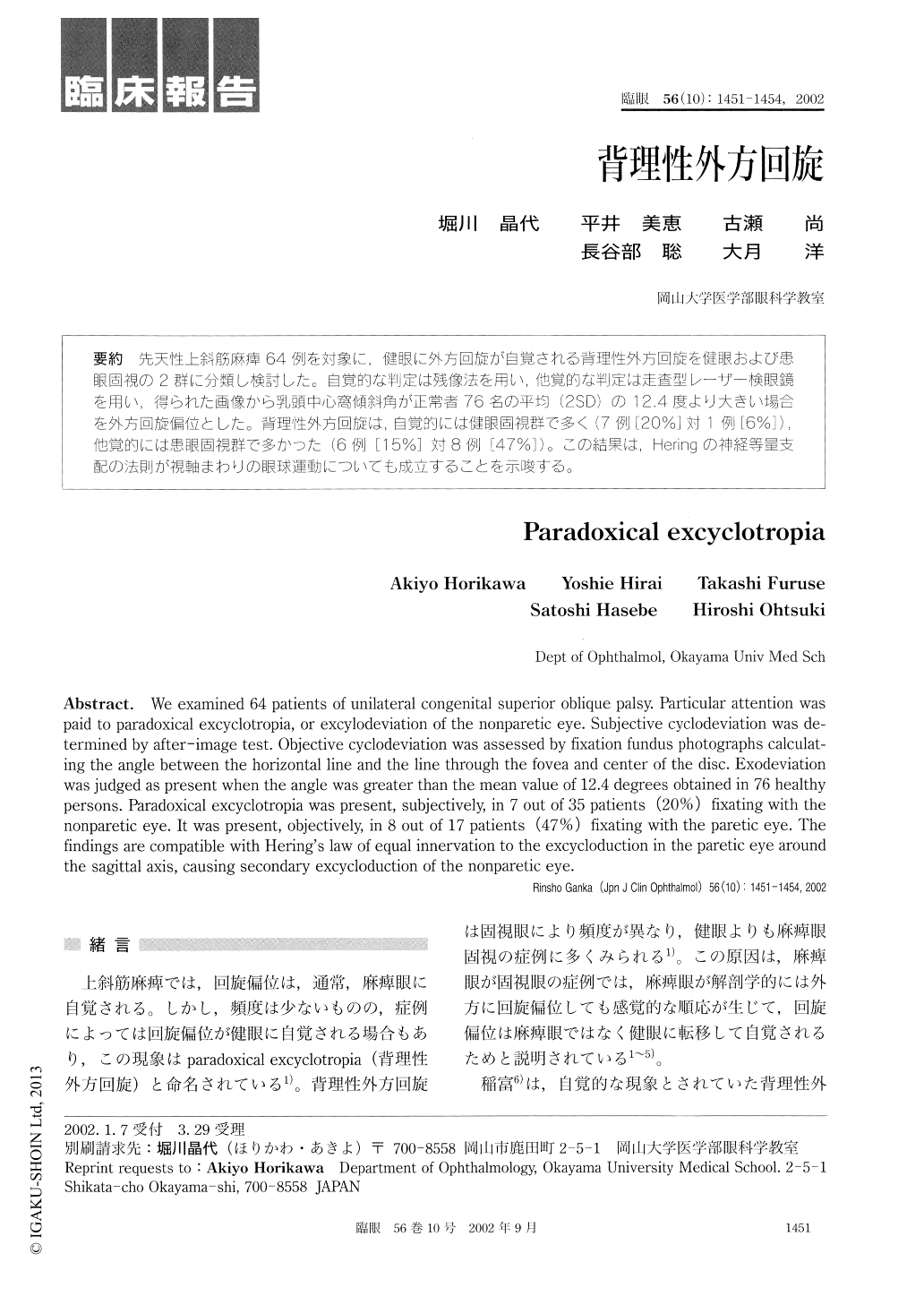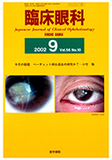Japanese
English
- 有料閲覧
- Abstract 文献概要
- 1ページ目 Look Inside
先天性上斜筋麻痺64例を対象に,健眼に外方回旋が自覚される背理性外方回旋を健眼および患眼固視の2群に分類し検討した。自覚的な判定は残像法を用い,他覚的な判定は走査型レーザー検眼鏡を用い,得られた画像から乳頭中心窩傾斜角が正常者76名の平均(2SD)の12.4度より大きい場合を外方回旋偏位とした。背理性外方回旋は,自覚的には健眼固視群で多く(7例[20%]対1例[6%]),他覚的には患眼固視群で多かった(6例[15%]対8例[47%])。この結果は,Heringの神経等量支配の法則が視軸まわりの眼球運動についても成立することを示唆する。
We examined 64 patients of unilateral congenital superior oblique palsy. Particular attention was paid to paradoxical excyclotropia, or excylodeviation of the nonparetic eye. Subjective cyclodeviation was de-termined by after-image test. Objective cyclodeviation was assessed by fixation fundus photographs calculat-ing the angle between the horizontal line and the line through the fovea and center of the disc. Exodeviation was judged as present when the angle was greater than the mean value of 12.4 degrees obtained in 76 healthy persons. Paradoxical excyclotropia was present, subjectively, in 7 out of 35 patients (20%) fixating with the nonparetic eye. It was present, objectively, in 8 out of 17 patients (47%) fixating with the paretic eye. The findings are compatible with Hering's law of equal innervation to the excycloduction in the paretic eye around the sagittal axis, causing secondary excycloduction of the nonparetic eye.

Copyright © 2002, Igaku-Shoin Ltd. All rights reserved.


